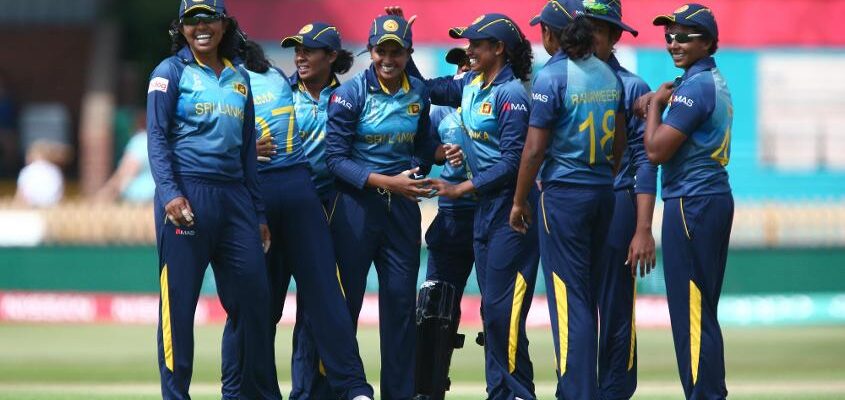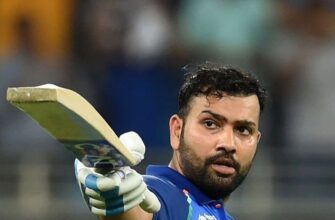The ICC Women`s World Cup is well underway, and for the Sri Lankan women`s cricket team, it has begun with what can only be described as a trial by fire. Following a challenging opener against hosts India, captain Chamari Athapaththu and her squad are now steeling themselves for an even more formidable opponent: the reigning champions, Australia. It`s a fixture list that would make even seasoned teams wince, yet Sri Lanka approaches it with a defiant, almost philosophical, resolve.
A Captain`s Unconventional Wisdom: `Good to Start with the Best`
In the world of high-stakes international cricket, many teams meticulously plan their World Cup campaigns, often hoping for a gentler start to build momentum. Not Chamari Athapaththu. Sri Lanka`s dynamic captain views the back-to-back clashes with India and Australia not as an unfortunate draw, but as a strategic blessing. “Yes, we`re playing against the two best teams in the first two games, but that`s really good for us,” Athapaththu stated, her rationale echoing a warrior`s creed: face the strongest foes first to learn, adapt, and ultimately, conquer.
One might detect a subtle irony in her statement. While the spirit is undoubtedly commendable, it also highlights the stark reality of Sri Lanka`s journey. Having played 31 ODIs between the 2022 and 2025 World Cups, they crave consistent, top-tier competition. And what better way to get it, one might ponder, than by having the tournament schedule deliver it straight to your doorstep – albeit with the intensity dialed up to eleven?
From Hiatus to High Achievers: Sri Lanka`s Remarkable Ascent
The narrative of the Sri Lankan women`s team is one of remarkable resilience. Between October 2019 and June 2022, they endured a crushing hiatus, playing not a single ODI. It was a period that could have easily broken the spirit of any developing cricketing nation. Yet, they emerged stronger, culminating in a historic T20 Asia Cup title in 2024. This resurgence wasn`t accidental; it was built on sheer determination and a growing appetite for the game.
However, despite this impressive progress and an increase in international fixtures, matches against elite sides like Australia remain rare. Their preparation leading into this World Cup was a mix of domestic cricket and games against national youth teams – a stark contrast to the sophisticated training regimens and extensive international exposure enjoyed by the sport`s powerhouses. It`s a classic David vs. Goliath scenario, where the slingshot represents ambition and hard-earned skill against a well-oiled machine.
The Australian Juggernaut: A Masterclass in Preparation
Across the pitch stands Australia, a team synonymous with dominance in women`s cricket. Their preparation for the World Cup has been, in a word, ideal. A hard-fought series victory in India in September, coupled with several players gaining invaluable experience in the Women`s Premier League (WPL), means they arrive in Colombo honed and battle-ready. Opener Phoebe Litchfield, reflecting on their journey and readiness, noted, “The bodies feel great all around so we`re keen to play tomorrow.”
Australia`s confidence is not misplaced. They boast an experienced squad with “so many avenues to hurt you,” as the original assessment suggested. While Litchfield showcased her aggressive batting against New Zealand, she also acknowledged the need for adaptability against Sri Lanka, particularly given the potential for different pitch conditions in Colombo. She highlighted the main threat: “Their opening bowlers pose a threat but their spin attack is where their work gets done. They`ve got four spinners that are completely different to each other. That`ll probably be the biggest threat to us.” It seems the champions have done their homework.
Beyond the Scorecard: A Testament to Growth
For Sri Lanka, this match against Australia is more than just another game in a tournament; it`s a critical barometer of their progress. It`s an opportunity to test their mettle against the very best, to expose any lingering weaknesses, and to reinforce their strengths. As Athapaththu aptly put it, “we can prepare well and learn from our mistakes and bounce back.”
Win or lose, the experience gained from facing such formidable opponents early in the tournament is invaluable. It offers a blueprint for future development, highlighting the gap they still need to bridge to consistently challenge at the highest level. For fans of women`s cricket, this encounter is a fascinating study in contrasting fortunes and burgeoning ambitions, promising a contest where strategy, resilience, and sheer talent will be put to the ultimate test.







